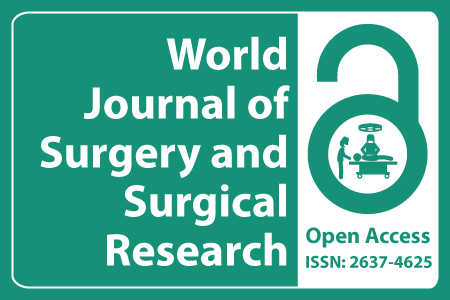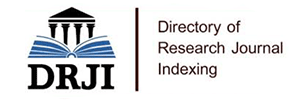
Journal Basic Info
- Impact Factor: 1.989**
- H-Index: 6
- ISSN: 2637-4625
- DOI: 10.25107/2637-4625
Major Scope
- Urological Surgery
- General Surgery
- Vascular Surgery
- Cardiothoracic Surgery
- Hepatology
- Minimal Invasive Surgery
- Surgical Procedures
- Podiatric Surgery
Abstract
Citation: World J Surg Surg Res. 2022;5(1):1384.DOI: 10.25107/2637-4625.1384
Preoperative Triage for Detection of SARS-CoV-2 Infection in Surgical Patients: Lessons Learned for Resuming Surgery
Roger Pujol, Eva Rivas, Isabel Gracia, Angel Caballero, Purificacion Matute, Tomas Cunat, Misericordia Basora, Neus Fabregas, Maria Jose Arguis, Daniel Luis Forne, Jose Maria Balibrea, Anais Besa, Guillermo Laguna, Concepcion Monsalve, Antonio M Lacy, Graciela Martinez-Palli and Perioperative COVID Group Hospital Clinic
Department of Anesthesia, Hospital Clinic of Barcelona, University of Barcelona, Spain Department of Outcomes Research, Cleveland Clinic, Cleveland, Ohio, USA Department of Gastrointestinal Surgery, Hospital Clinic of Barcelona, IDIBAPS, University of Barcelona, Spain August Pi i Sunyer Biomedical Research Institute – IDIBAPS, University of Barcelona, Spain Biomedical Networking Research Center on Respiratory Diseases (CIBERES), Spain These authors contributed equally to this work
*Correspondance to: Graciela Martinez-Palli
PDF Full Text Research Article | Open Access
Abstract:
Introduction: Ensuring the safety of elective surgical activity requires the establishment of pathways to detect and prevent SARS-CoV-2 infection. We aimed to describe the impact of COVID-19 outbreak on hospital surgical activity, and to assess the incidence of perioperative COVID-19 diagnosis within 2 protocolized screening pathways, for elective and non-elective surgery. Methods: Prospective cohort study of adults having surgery during the COVID-19 peak outbreak. The elective pathway included preoperative telephone surveys, and a quantitative Polymerase-Chain- Reaction Test (RT-PCR) only in patients who were asymptomatic and at low risk of infection. Only patients with negative screening had surgery. In the non-elective pathway, preoperative screening was performed during hospital admission. Patients were allocated to either routine or COVID-19 designated operating rooms, recovery areas, or surgical wards. Results: During a 10-weeks period, 835 patients were considered for the elective pathway and 725 had negative RT-PCR results and surgery. This reflects an 83% reduction in surgical activity compared to 2019. Additional, 596 patients had non-elective surgery, representing a 28% reduction. Preoperatively, 39 patients (7.2%) tested positive for SARS-CoV-2 and had surgery through the non-elective pathway, compared to none in the elective pathway (p<0.001). Postoperatively, 1.4% of elective and 2.2% of non-elective patients tested positive (p>0.05). Mortality was higher in nonelective surgery (0.6% vs. 2.9%, p<0.001) and in COVID-19 patients (0% vs. 14%, p<0.001). Conclusion: The low incidence of perioperative COVID-19 diagnosis in elective surgeries during the first weeks of the outbreak demonstrates the importance and effectiveness of preoperative screening combining phone surveys and RT-PCR.
Keywords:
Perioperative; SARS-CoV-2; COVID-19; Nosocomial infection; Surgical
Cite the Article:
Pujol R, Rivas E, Gracia I, Caballero A, Matute P, Cunat T, et al. Preoperative Triage for Detection of SARS-CoV-2 Infection in Surgical Patients: Lessons Learned for Resuming Surgery. World J Surg Surgical Res. 2022; 5: 1384..













